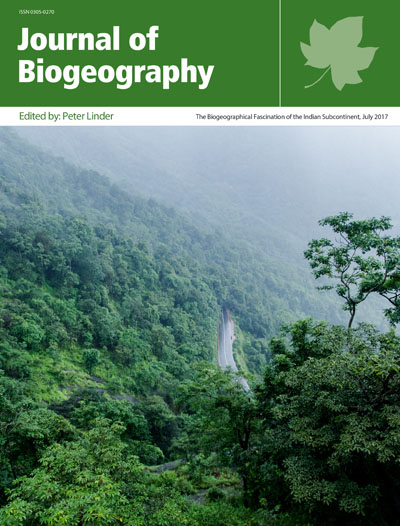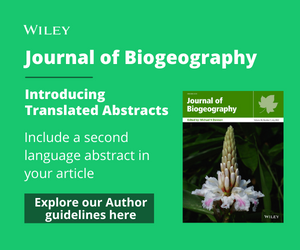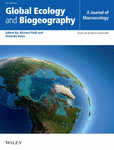
The Indian subcontinent (also referred to as South Asia) is a biogeographical wonderbox, rich in diversity, and rich in patterns that can be used to test many hypotheses. The gradients are impressive: from sea level to the worlds' highest mountain, from the wet tropical forests of Sri Lanka to the arid desert of Pakistan, from the massive mangrove forests of the Sundabans to the montane forests of the Ghats, large savannas, and this in co-existence with thousands of years of human civilisation.
In this Virtual Issue we assembled a small set of papers exploring these issues. We start with a classic paper by John Briggs (2003) on the biogeographical and tectonic history of India. Since then a series of papers have explored the effects of the biological passengers, which the Indian plate assembled from Gondwana, African and Asia during its long journey across the Tethys in the Eocene.
The effects of elevational gradients on diversity can hardly be better explored than on the slopes of the Himalayas, as illustrated by the paper by Acharya et al (2011), who examined orchid richness on an altitudinal gradient from 100 to 5200 m, and established a hump-backed curve with greatest richness at 1600 m. There are few plant families which range from lowland rainforest to the alpine zone, these include grasses, ericas, daisies and orchid. Not only does this present a massive altitudinal gradient, but at the western end it is dry, and the eastern end wet. This east-west gradient is explored in Srinavasan (2014), where they make a novel link between glacial refugia and nestedness of community structure.
Latitudinal gradients can be explored along the Ghats, which range from 8 to 21 degrees north (thus 1600 km) along the west coast escarpment, and the wetter areas are forested. The variation patterns along these forests have received substantial interest, and we include several papers in this collection that use these forests. Davidar et al (2005) showed that alpha diversity was influenced by seasonality, and in a later paper (2012) showed that beta-diversity (turnover in species composition) could also be driven by changes in seasonality. Gower et al (2016) use phylogeographical methods to show that the separation between the western and eastern Ghats is ancient, so providing insight into the biogeographical history of the biota of the Indian subcontinent.
The massive, tiger-infested mangrove forests of the Sundabans, in the delta of the Ganges, have been very important as barriers to tsunamis, and might become increasingly important as protection against the erosional effects of sea level rise. Giri et al (2008) explored the conservation status of mangroves globally, using historical landsat images.
Tigers are the focus of a conservation biogeography study in which Harihar et al. (2014) estimated density of prey species at fine scales over large areas in the Western Terai Arc Landscape. This allowed evidence-based conservation targets to be established. Another wide-ranging carnivore, the leopard, was the subject of a conservation-related study of spatial genetic structure in the Satpura-Maikal Landscape of Central India (Dutta et al. 2013). Habitat fragmentation was found to have a detectible effect on the genetic structure of this species, but wildlife corridors are effective in supporting movement of individuals between subpopulations.
Peter Linder, Editor-in-Chief, Journal of Biogeography
Janet Franklin, Editor-in-Chief, Diversity and Distributions
Brian McGill, Editor-in-Chief, Global Ecology and Biogeography









